Tome Eftimov
FoodSEM: Large Language Model Specialized in Food Named-Entity Linking
Sep 26, 2025Abstract:This paper introduces FoodSEM, a state-of-the-art fine-tuned open-source large language model (LLM) for named-entity linking (NEL) to food-related ontologies. To the best of our knowledge, food NEL is a task that cannot be accurately solved by state-of-the-art general-purpose (large) language models or custom domain-specific models/systems. Through an instruction-response (IR) scenario, FoodSEM links food-related entities mentioned in a text to several ontologies, including FoodOn, SNOMED-CT, and the Hansard taxonomy. The FoodSEM model achieves state-of-the-art performance compared to related models/systems, with F1 scores even reaching 98% on some ontologies and datasets. The presented comparative analyses against zero-shot, one-shot, and few-shot LLM prompting baselines further highlight FoodSEM's superior performance over its non-fine-tuned version. By making FoodSEM and its related resources publicly available, the main contributions of this article include (1) publishing a food-annotated corpora into an IR format suitable for LLM fine-tuning/evaluation, (2) publishing a robust model to advance the semantic understanding of text in the food domain, and (3) providing a strong baseline on food NEL for future benchmarking.
Tracing the Interactions of Modular CMA-ES Configurations Across Problem Landscapes
Jul 03, 2025Abstract:This paper leverages the recently introduced concept of algorithm footprints to investigate the interplay between algorithm configurations and problem characteristics. Performance footprints are calculated for six modular variants of the CMA-ES algorithm (modCMA), evaluated on 24 benchmark problems from the BBOB suite, across two-dimensional settings: 5-dimensional and 30-dimensional. These footprints provide insights into why different configurations of the same algorithm exhibit varying performance and identify the problem features influencing these outcomes. Our analysis uncovers shared behavioral patterns across configurations due to common interactions with problem properties, as well as distinct behaviors on the same problem driven by differing problem features. The results demonstrate the effectiveness of algorithm footprints in enhancing interpretability and guiding configuration choices.
ClustOpt: A Clustering-based Approach for Representing and Visualizing the Search Dynamics of Numerical Metaheuristic Optimization Algorithms
Jul 03, 2025Abstract:Understanding the behavior of numerical metaheuristic optimization algorithms is critical for advancing their development and application. Traditional visualization techniques, such as convergence plots, trajectory mapping, and fitness landscape analysis, often fall short in illustrating the structural dynamics of the search process, especially in high-dimensional or complex solution spaces. To address this, we propose a novel representation and visualization methodology that clusters solution candidates explored by the algorithm and tracks the evolution of cluster memberships across iterations, offering a dynamic and interpretable view of the search process. Additionally, we introduce two metrics - algorithm stability and algorithm similarity- to quantify the consistency of search trajectories across runs of an individual algorithm and the similarity between different algorithms, respectively. We apply this methodology to a set of ten numerical metaheuristic algorithms, revealing insights into their stability and comparative behaviors, thereby providing a deeper understanding of their search dynamics.
Adaptive Estimation of the Number of Algorithm Runs in Stochastic Optimization
Jul 02, 2025Abstract:Determining the number of algorithm runs is a critical aspect of experimental design, as it directly influences the experiment's duration and the reliability of its outcomes. This paper introduces an empirical approach to estimating the required number of runs per problem instance for accurate estimation of the performance of the continuous single-objective stochastic optimization algorithm. The method leverages probability theory, incorporating a robustness check to identify significant imbalances in the data distribution relative to the mean, and dynamically adjusts the number of runs during execution as an online approach. The proposed methodology was extensively tested across two algorithm portfolios (104 Differential Evolution configurations and the Nevergrad portfolio) and the COCO benchmark suite, totaling 5748000 runs. The results demonstrate 82% - 95% accuracy in estimations across different algorithms, allowing a reduction of approximately 50% in the number of runs without compromising optimization outcomes. This online calculation of required runs not only improves benchmarking efficiency, but also contributes to energy reduction, fostering a more environmentally sustainable computing ecosystem.
Comparing Optimization Algorithms Through the Lens of Search Behavior Analysis
Jul 02, 2025Abstract:The field of numerical optimization has recently seen a surge in the development of "novel" metaheuristic algorithms, inspired by metaphors derived from natural or human-made processes, which have been widely criticized for obscuring meaningful innovations and failing to distinguish themselves from existing approaches. Aiming to address these concerns, we investigate the applicability of statistical tests for comparing algorithms based on their search behavior. We utilize the cross-match statistical test to compare multivariate distributions and assess the solutions produced by 114 algorithms from the MEALPY library. These findings are incorporated into an empirical analysis aiming to identify algorithms with similar search behaviors.
Customized Exploration of Landscape Features Driving Multi-Objective Combinatorial Optimization Performance
Jul 02, 2025Abstract:We present an analysis of landscape features for predicting the performance of multi-objective combinatorial optimization algorithms. We consider features from the recently proposed compressed Pareto Local Optimal Solutions Networks (C-PLOS-net) model of combinatorial landscapes. The benchmark instances are a set of rmnk-landscapes with 2 and 3 objectives and various levels of ruggedness and objective correlation. We consider the performance of three algorithms -- Pareto Local Search (PLS), Global Simple EMO Optimizer (GSEMO), and Non-dominated Sorting Genetic Algorithm (NSGA-II) - using the resolution and hypervolume metrics. Our tailored analysis reveals feature combinations that influence algorithm performance specific to certain landscapes. This study provides deeper insights into feature importance, tailored to specific rmnk-landscapes and algorithms.
Landscape Features in Single-Objective Continuous Optimization: Have We Hit a Wall in Algorithm Selection Generalization?
Jan 29, 2025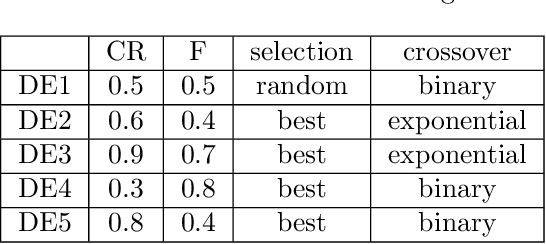
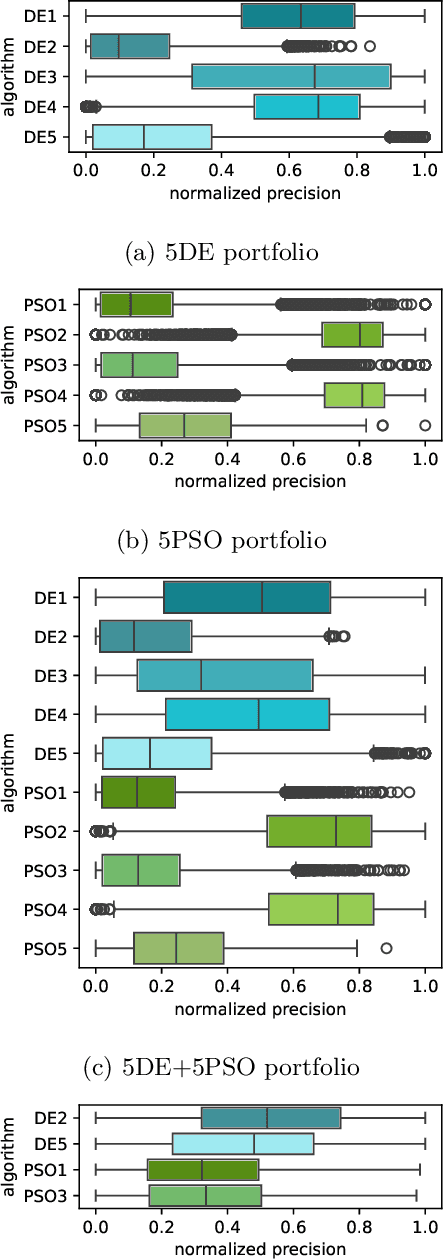
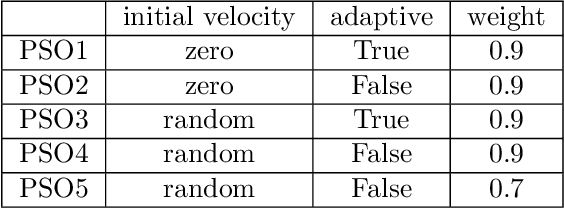
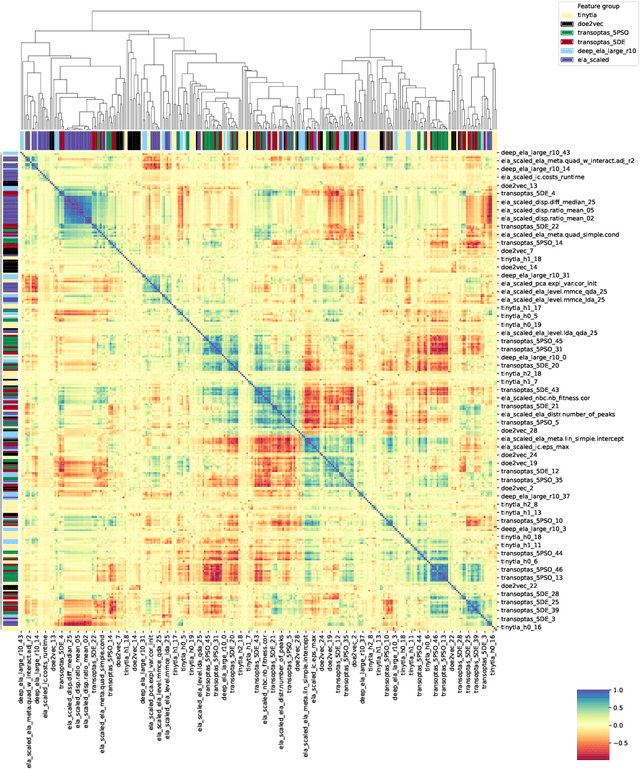
Abstract:%% Text of abstract The process of identifying the most suitable optimization algorithm for a specific problem, referred to as algorithm selection (AS), entails training models that leverage problem landscape features to forecast algorithm performance. A significant challenge in this domain is ensuring that AS models can generalize effectively to novel, unseen problems. This study evaluates the generalizability of AS models based on different problem representations in the context of single-objective continuous optimization. In particular, it considers the most widely used Exploratory Landscape Analysis features, as well as recently proposed Topological Landscape Analysis features, and features based on deep learning, such as DeepELA, TransOptAS and Doe2Vec. Our results indicate that when presented with out-of-distribution evaluation data, none of the feature-based AS models outperform a simple baseline model, i.e., a Single Best Solver.
A Learning Search Algorithm for the Restricted Longest Common Subsequence Problem
Oct 15, 2024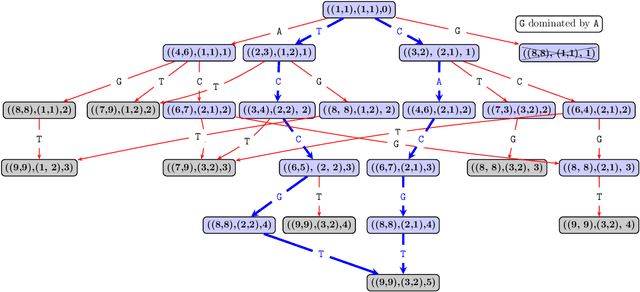
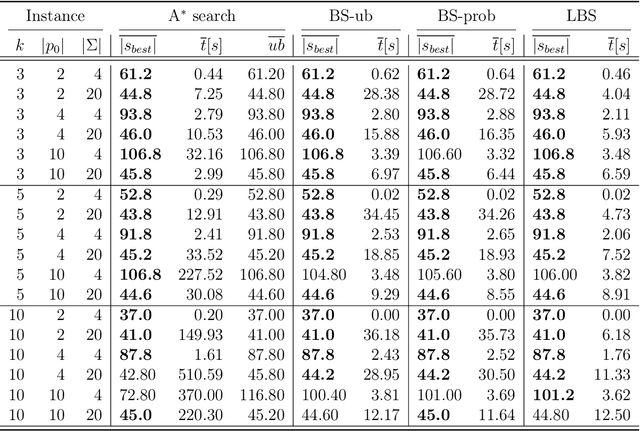
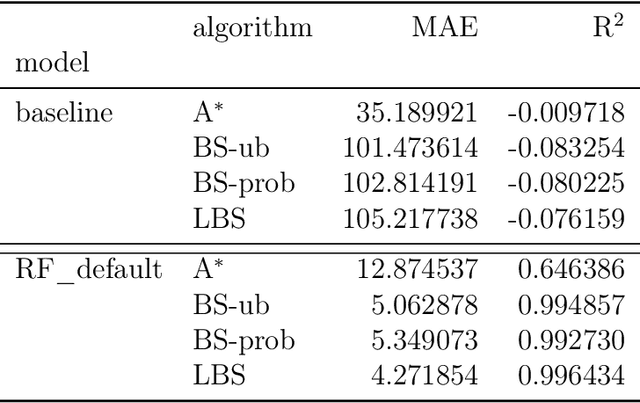

Abstract:This paper addresses the Restricted Longest Common Subsequence (RLCS) problem, an extension of the well-known Longest Common Subsequence (LCS) problem. This problem has significant applications in bioinformatics, particularly for identifying similarities and discovering mutual patterns and important motifs among DNA, RNA, and protein sequences. Building on recent advancements in solving this problem through a general search framework, this paper introduces two novel heuristic approaches designed to enhance the search process by steering it towards promising regions in the search space. The first heuristic employs a probabilistic model to evaluate partial solutions during the search process. The second heuristic is based on a neural network model trained offline using a genetic algorithm. A key aspect of this approach is extracting problem-specific features of partial solutions and the complete problem instance. An effective hybrid method, referred to as the learning beam search, is developed by combining the trained neural network model with a beam search framework. An important contribution of this paper is found in the generation of real-world instances where scientific abstracts serve as input strings, and a set of frequently occurring academic words from the literature are used as restricted patterns. Comprehensive experimental evaluations demonstrate the effectiveness of the proposed approaches in solving the RLCS problem. Finally, an empirical explainability analysis is applied to the obtained results. In this way, key feature combinations and their respective contributions to the success or failure of the algorithms across different problem types are identified.
Instance Selection for Dynamic Algorithm Configuration with Reinforcement Learning: Improving Generalization
Jul 18, 2024Abstract:Dynamic Algorithm Configuration (DAC) addresses the challenge of dynamically setting hyperparameters of an algorithm for a diverse set of instances rather than focusing solely on individual tasks. Agents trained with Deep Reinforcement Learning (RL) offer a pathway to solve such settings. However, the limited generalization performance of these agents has significantly hindered the application in DAC. Our hypothesis is that a potential bias in the training instances limits generalization capabilities. We take a step towards mitigating this by selecting a representative subset of training instances to overcome overrepresentation and then retraining the agent on this subset to improve its generalization performance. For constructing the meta-features for the subset selection, we particularly account for the dynamic nature of the RL agent by computing time series features on trajectories of actions and rewards generated by the agent's interaction with the environment. Through empirical evaluations on the Sigmoid and CMA-ES benchmarks from the standard benchmark library for DAC, called DACBench, we discuss the potentials of our selection technique compared to training on the entire instance set. Our results highlight the efficacy of instance selection in refining DAC policies for diverse instance spaces.
A Survey of Meta-features Used for Automated Selection of Algorithms for Black-box Single-objective Continuous Optimization
Jun 08, 2024Abstract:The selection of the most appropriate algorithm to solve a given problem instance, known as algorithm selection, is driven by the potential to capitalize on the complementary performance of different algorithms across sets of problem instances. However, determining the optimal algorithm for an unseen problem instance has been shown to be a challenging task, which has garnered significant attention from researchers in recent years. In this survey, we conduct an overview of the key contributions to algorithm selection in the field of single-objective continuous black-box optimization. We present ongoing work in representation learning of meta-features for optimization problem instances, algorithm instances, and their interactions. We also study machine learning models for automated algorithm selection, configuration, and performance prediction. Through this analysis, we identify gaps in the state of the art, based on which we present ideas for further development of meta-feature representations.
 Add to Chrome
Add to Chrome Add to Firefox
Add to Firefox Add to Edge
Add to Edge